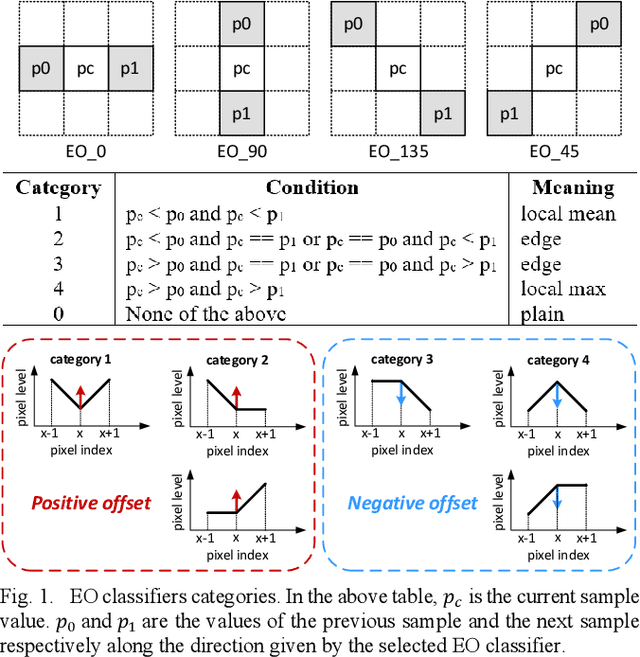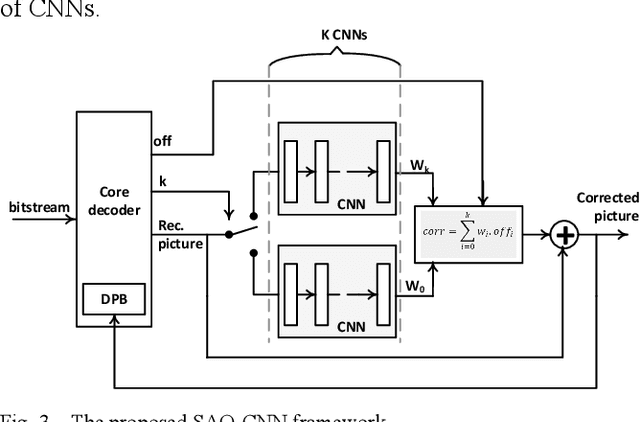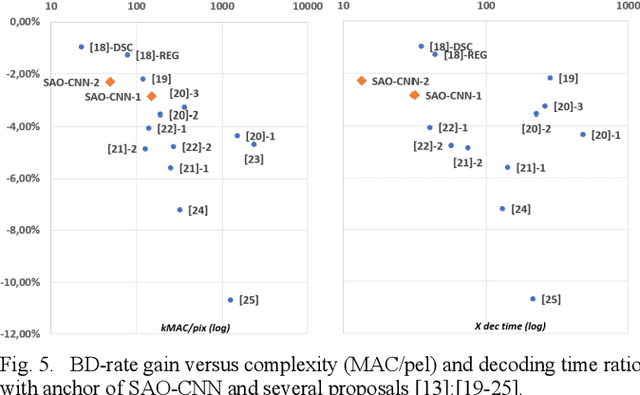Revisiting the Sample Adaptive Offset post-filter of VVC with Neural-Networks
Paper and Code
Jul 11, 2022



The Sample Adaptive Offset (SAO) filter has been introduced in HEVC to reduce general coding and banding artefacts in the reconstructed pictures, in complement to the De-Blocking Filter (DBF) which reduces artifacts at block boundaries specifically. The new video compression standard Versatile Video Coding (VVC) reduces the BD-rate by about 36% at the same reconstruction quality compared to HEVC. It implements an additional new in-loop Adaptive Loop Filter (ALF) on top of the DBF and the SAO filter, the latter remaining unchanged compared to HEVC. However, the relative performance of SAO in VVC has been lowered significantly. In this paper, it is proposed to revisit the SAO filter using Neural Networks (NN). The general principles of the SAO are kept, but the a-priori classification of SAO is replaced with a set of neural networks that determine which reconstructed samples should be corrected and in which proportion. Similarly to the original SAO, some parameters are determined at the encoder side and encoded per CTU. The average BD-rate gain of the proposed SAO improves VVC by at least 2.3% in Random Access while the overall complexity is kept relatively small compared to other NN-based methods.
 Add to Chrome
Add to Chrome Add to Firefox
Add to Firefox Add to Edge
Add to Edge